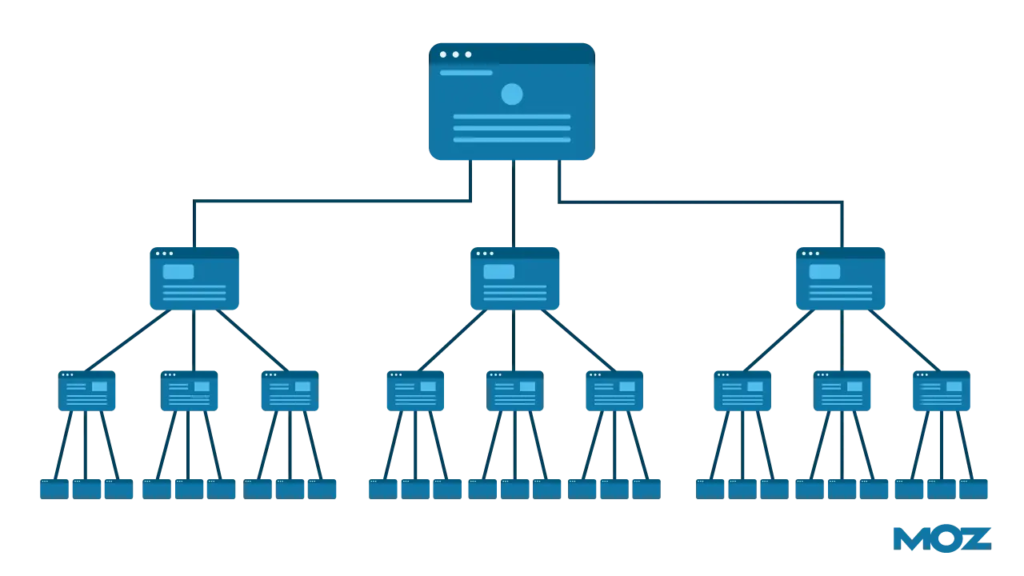In the ever-evolving landscape of digital marketing, the intersection of UX (User Experience) design and SEO (Search Engine Optimization) has emerged as a powerful force. We delve deep into the symbiotic relationship between these two critical elements, unraveling how they can work harmoniously to elevate your online presence and outshine competitors.

Crafting a Seamless User Experience
1. Enhancing Website Navigation Effective UX design starts with intuitive navigation. A well-structured website, with clear menus and logical pathways, ensures that visitors find what they seek effortlessly. This reduces bounce rates and keeps users engaged longer, a factor that search engines adore.
2. Mobile Optimization In today’s mobile-centric world, optimizing your site for mobile devices is paramount. Responsive design not only pleases users but also aligns with Google’s mobile-first indexing, potentially boosting your search rankings.
3. Speed Matters Slow-loading websites frustrate users and hurt SEO. Streamlining your site’s performance not only improves user experience but also aligns with Google’s ranking algorithms, where page speed is a crucial factor.
Also Check Dominating YouTube SEO 2023: Strategies for Higher Rankings
Content Is King, but Context Is the Kingdom
1. Keyword Research and Integration Effective SEO begins with meticulous keyword research. Identify relevant keywords that resonate with your audience and seamlessly integrate them into your content. Avoid keyword stuffing; instead, focus on creating valuable, informative content.
2. High-Quality, Engaging Content Content should be informative, engaging, and shareable. This encourages backlinks and social sharing, both of which can positively impact SEO rankings.
3. Schema Markup for Enhanced Visibility Utilizing schema markup enriches search results with additional information, making your content stand out. Google rewards websites that provide detailed, structured data.
User-Centric Design and SEO Strategies
1. Mobile-Friendly Content Design your content with mobile users in mind. Short paragraphs, concise headings, and engaging visuals ensure that your message reaches all users effectively.
2. Accessibility Matters Accessibility features, such as alt text for images and keyboard navigation, not only cater to diverse audiences but also align with Google’s inclusivity efforts.
3. A/B Testing for Continuous Improvement A/B testing allows you to refine UX design and SEO strategies. Continuously optimize your website based on user behavior and performance metrics.

The Marriage of UX Design and SEO in E-commerce
In the e-commerce realm, the synergy between UX design and SEO becomes even more critical. An intelligently designed website that prioritizes user experience can significantly boost sales. Here’s how:
1. Streamlined Checkout Process A seamless, user-friendly checkout process reduces cart abandonment rates, ultimately boosting conversion rates—a metric Google tracks closely.
2. Product Page Optimization Rich product descriptions, high-quality images, and user reviews not only enhance the user experience but also improve search engine rankings.
3. Mobile Shopping Experience Mobile optimization, coupled with a simplified shopping experience, ensures that potential customers can browse and make purchases effortlessly from their smartphones.
Maximizing the Benefits: Strategies for Success
Now that we’ve explored the fundamental principles of harmonizing UX design and SEO, let’s delve deeper into actionable strategies to ensure your website not only ranks higher on Google but also delivers an exceptional user experience.
1. Comprehensive Keyword Strategy
A robust keyword strategy is the cornerstone of successful SEO. Research and select keywords that align with your business goals and user intent. Tools like Google Keyword Planner and SEMrush can help identify high-impact keywords. Once you’ve identified these keywords, strategically incorporate them into your website’s content, meta descriptions, and headers. Remember, natural integration is key; avoid forced keyword stuffing.
2. User-Centric Content Creation
Quality content is essential. Craft content that not only satisfies search engine algorithms but also provides real value to your audience. In-depth, well-researched articles, blog posts, and product descriptions are more likely to attract organic traffic. Remember, your content should answer user queries comprehensively.
3. Optimized Visual Elements
Visual elements play a crucial role in user engagement. Optimize images and videos on your website to ensure they load quickly. Use descriptive alt tags for images to improve accessibility and SEO. Additionally, consider incorporating infographics, charts, and videos to make complex information more digestible and engaging for your visitors.

4. Site Architecture and Internal Linking
An organized site structure not only aids navigation but also helps search engines understand the hierarchy of your content. Ensure a clear and logical website architecture with categories and subcategories. Implement a well-thought-out internal linking strategy to guide users and search engine crawlers to relevant content. This not only enhances user experience but also distributes SEO value throughout your site.
5. Mobile-First Approach
Given the increasing prevalence of mobile users, adopting a mobile-first approach is imperative. Ensure that your website is responsive and mobile-friendly. Google prioritizes mobile indexing, so optimizing for mobile devices is non-negotiable for higher search rankings.
6. User Feedback and Continuous Improvement
User feedback is a goldmine of insights. Encourage users to provide feedback through surveys, comments, or contact forms. Analyze this feedback to identify pain points and areas for improvement in both your UX design and content. A website that evolves based on user input is more likely to meet user expectations and rank higher on search engines.
7. Social Signals and Backlinks
Engage with your audience on social media platforms. Sharing your content and encouraging social sharing can lead to increased visibility and backlinks, which are invaluable for SEO. High-quality backlinks from authoritative sources can significantly boost your website’s authority and trustworthiness in the eyes of search engines.

8. Regular SEO Audits
Perform regular SEO audits to identify and rectify any issues that might be hindering your website’s performance. This includes checking for broken links, optimizing meta tags, improving site speed, and ensuring proper indexing of your pages.
9. Local SEO Optimization
If your business serves a local audience, don’t underestimate the power of local SEO. Ensure your Google My Business listing is accurate and up-to-date. Encourage customer reviews and ratings. Local SEO can significantly improve your visibility in local search results.
10. Monitor, Analyze, and Adapt
Finally, continuously monitor your website’s performance using tools like Google Analytics and Google Search Console. Analyze the data, track keyword rankings, and assess user behavior. Use these insights to adapt your strategies, refine your content, and enhance the user experience continually.
Incorporating these strategies into your digital marketing efforts will not only help you outrank your competitors but also establish your website as a go-to resource for users in your niche. Remember, the synergy between UX design and SEO is an ongoing journey of refinement and optimization, and the rewards are well worth the effort.
Here are some frequently asked questions (FAQs) related to the synergy of UX design and SEO:

1. What is UX design, and how does it relate to SEO?
- User Experience (UX) design focuses on creating a seamless and enjoyable interaction between users and a website or application. SEO, on the other hand, is about optimizing a website to rank higher on search engines. The connection lies in providing a user-friendly experience that aligns with SEO best practices to improve search rankings.
2. How can I improve website navigation for better UX and SEO?
- To enhance website navigation, ensure clear and organized menus, use logical page hierarchies, and create user-friendly sitemaps. This not only improves the user experience but also helps search engines index your site effectively.
3. What are some key elements of mobile optimization for SEO and UX?
- Mobile optimization involves creating a responsive design that adapts to various screen sizes, optimizing page load times, and ensuring a mobile-friendly layout. Google prioritizes mobile-first indexing, making mobile optimization critical for both user satisfaction and SEO rankings.
4. How can I strike a balance between keyword optimization and user-centric content?
- Balancing keyword optimization and user-centric content is essential. Start by conducting thorough keyword research and then craft high-quality, informative content that naturally integrates these keywords. Prioritize delivering value to your audience while keeping SEO goals in mind.
5. What is schema markup, and how does it benefit both UX and SEO?
- Schema markup is a structured data format that provides search engines with additional context about the content on your website. It enhances search results by displaying rich snippets. This not only improves SEO by increasing click-through rates but also enhances the user experience by providing more relevant information.
6. How does A/B testing contribute to the synergy between UX design and SEO?
- A/B testing allows you to experiment with different website designs, layouts, and content to determine what resonates best with your audience. By continuously optimizing based on user behavior and performance metrics, you can improve both UX and SEO over time.
7. Can you explain the connection between e-commerce success and the synergy of UX design and SEO?
- In the e-commerce sector, a user-friendly website that ranks well on search engines is crucial for attracting and converting customers. Streamlined checkout processes, optimized product pages, and a mobile-friendly shopping experience all contribute to higher conversion rates and improved SEO rankings.
8. How do I ensure my website is accessible to all users while maintaining SEO performance?
- To ensure accessibility without compromising SEO, use alt text for images, provide keyboard navigation options, and adhere to WCAG guidelines. Google values accessibility, so these efforts align with SEO goals.
9. What role do social signals and backlinks play in the synergy of UX design and SEO?
- Social signals and backlinks are essential for SEO. Social sharing of your content can increase visibility, while high-quality backlinks from reputable sources enhance your website’s authority, both of which contribute to better search rankings and user trust.
10. Why is continuous monitoring and adaptation important in the synergy between UX design and SEO? – The digital landscape is dynamic. Continuous monitoring and adaptation allow you to stay current with user trends, search engine algorithm updates, and evolving industry standards.
This ensures that your website remains competitive and user-friendly while maintaining strong SEO performance.

